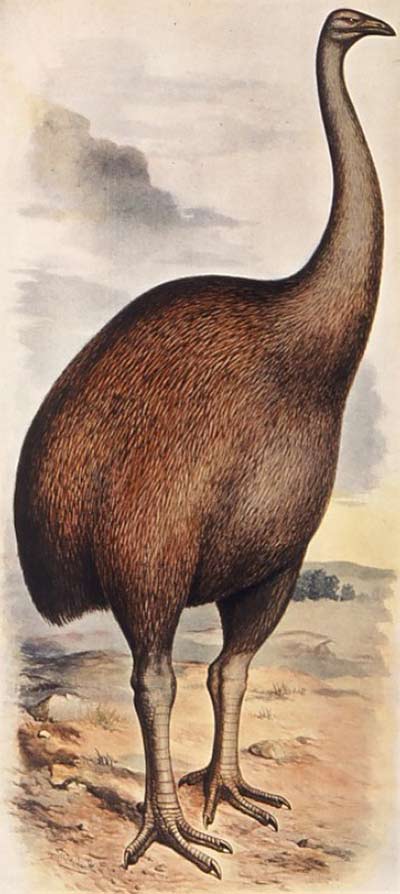Giant Extinct Birds Grew Up Slow

The moa, a large extinct bird from New Zealand, apparently had a decade-long adolescence.? This is unheard of in birds, but it may help explain how early hunters were able to wipe out the giant birds.
Moa, which have been extinct for several centuries, were ratites - a group of flightless birds that includes the ostrich, emu, cassowary, rhea, and kiwi.? The elephant bird of Madagascar is another ratite that has recently disappeared.
"Although moa had evolved from ancestral birds that could fly, they themselves were completely flightless and had actually lost all trace of their wings - not even retaining any vestigial wing bones," said Samuel Turvey of the Zoological Society of London.
There were 10 different moa species, ranging from turkey-size up to the giant Dinornis robustus, whose females weighed 530 pounds (240 kilograms) and stood 6 feet tall (2 meters) at the shoulder, but whose males were a third that size.
Most species of moa had stumpy leg bones, which would have made them very slow animals.? With no native land mammals on New Zealand, the moa filled in the niche of large herbivores like bison, rhinos, or giraffes - Turvey told LiveScience in an email message.
Recent research has shown that these lumbering giants took their time getting so big.
As reported in this week's issue of Nature, Turvey and his colleagues found cyclical growth marks - the equivalent of tree rings in animals - in the long bones from several moa specimens.? The marks, which tick off the changes in season, imply that the moa took nearly ten years to reach sexual maturity.
Sign up for the Live Science daily newsletter now
Get the world’s most fascinating discoveries delivered straight to your inbox.
"It's remarkable because, although many other vertebrates (including humans) take several years to reach full size, all living birds become fully grown within a year of hatching - even the large living ratites such as ostriches, rhea and emu," Turvey said.
The rapid maturation of birds is thought to be because they need to start flying as soon as possible.? But the moa may have had the luxury of growing up at a leisurely pace, as they had few natural predators besides the giant Haast's eagle.
That all changed, however, when the first humans - the Maori - arrived in New Zealand about 700 years ago and began hunting the birds extensively - often only eating the best bits, like the 'drumsticks,' and leaving the rest.?
"As moa took so long to grow up, they simply wouldn't have been able to replenish their populations rapidly enough to cope with this kind of hunting," Turvey said. "They seem to have been wiped out almost instantaneously."










